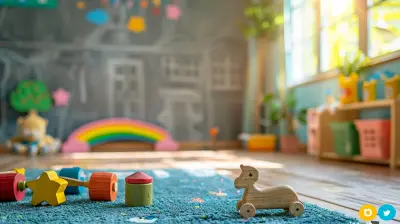Hydration Tips for Active Kids
19 August 2025
Let’s face it—keeping kids hydrated is tougher than getting them to put their shoes on the right feet. When they're bouncing off the walls with energy, the last thing on their minds is taking a sip of water. But here's the deal: active kids lose water faster than we think, and staying hydrated is a game-changer when it comes to their health, energy, and even mood.
As parents, we're constantly juggling snacks, schedules, and sports practices, so hydration tends to fall through the cracks. Don’t worry—I got you. Whether your kid is a soccer star, a playground pro, or just loves to run laps around the kitchen table, this guide will help you stay on top of their hydration needs like a parenting ninja.
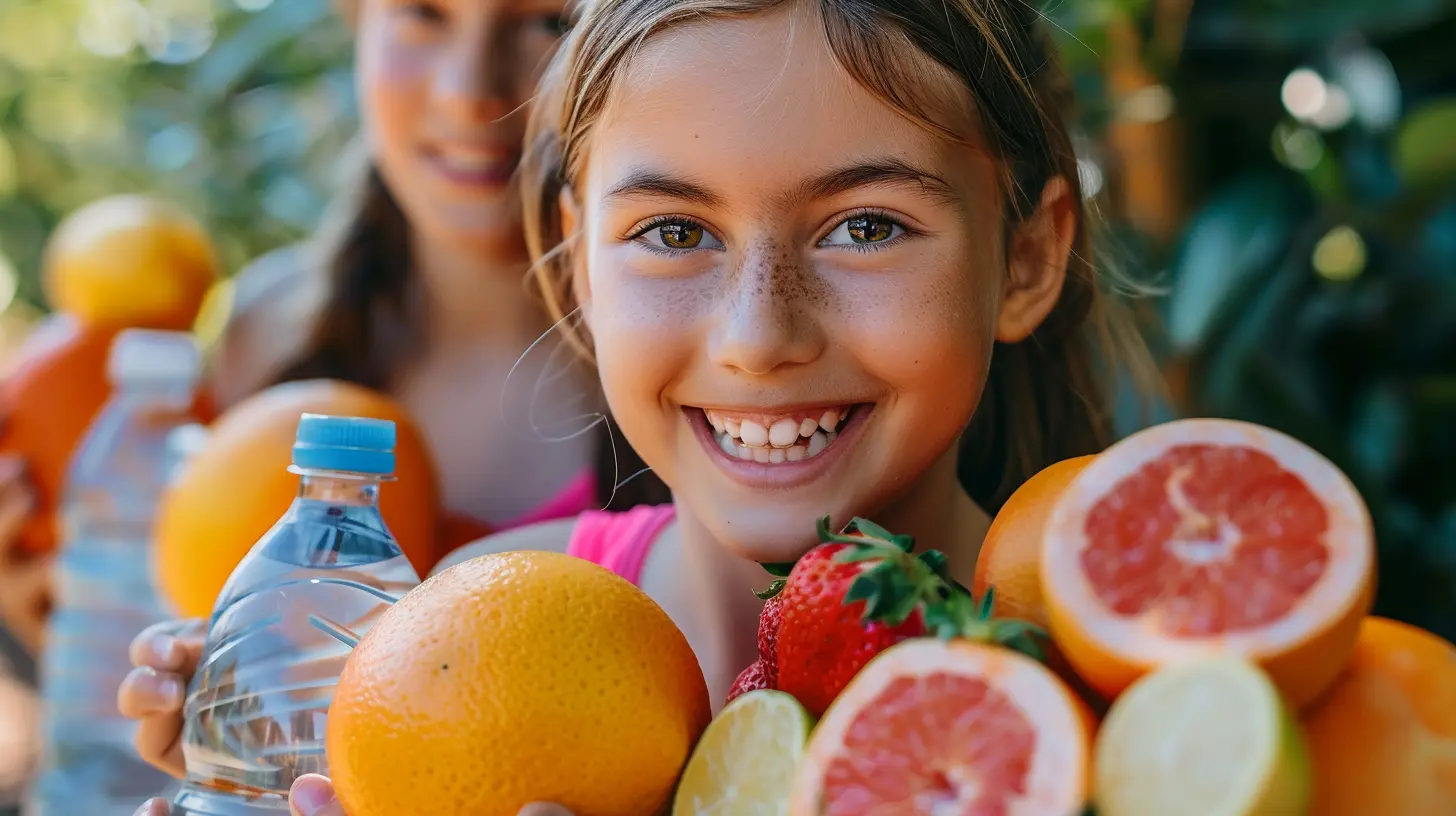
Why Is Hydration Such a Big Deal for Kids?
Before we jump into the tips, let’s talk about why hydration matters so much—especially for kids who are always on the move.Children are more prone to dehydration than adults. Their bodies don’t cool down as efficiently, and they often don’t realize they're thirsty until it's too late. That’s a recipe for dehydration, which can lead to fatigue, headaches, poor concentration, and even heat exhaustion if they’re really active in hot weather.
Staying properly hydrated helps:
- Regulate body temperature
- Support healthy metabolism
- Improve concentration and mood
- Prevent muscle cramps
- Boost energy levels
Think of water as your child’s internal air conditioner. Without it, their engine overheats—and no one wants a cranky, overheated kid on their hands!
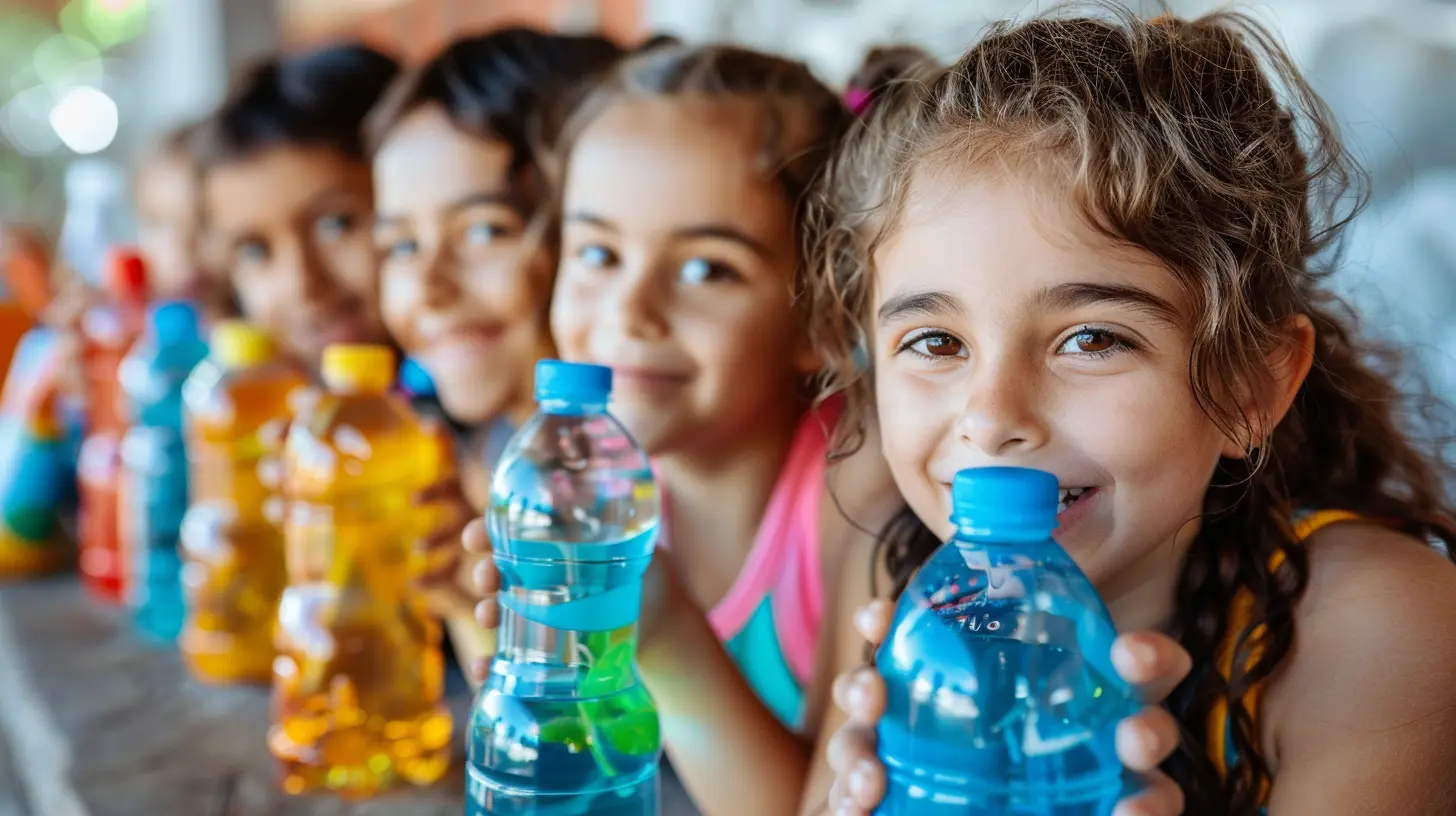
Signs Your Child Might Be Dehydrated
Kids aren’t always great at expressing what’s going on inside their bodies, so it’s up to us to spot the signs of dehydration. Keep an eye out for:- Dry or sticky mouth
- Headache or dizziness
- Tiredness or crankiness
- Dark yellow urine or infrequent peeing
- Cold hands and feet
- No tears when crying (this one’s sneaky!)
Notice any of these? Time to pump the breaks and get some fluids in them—stat!
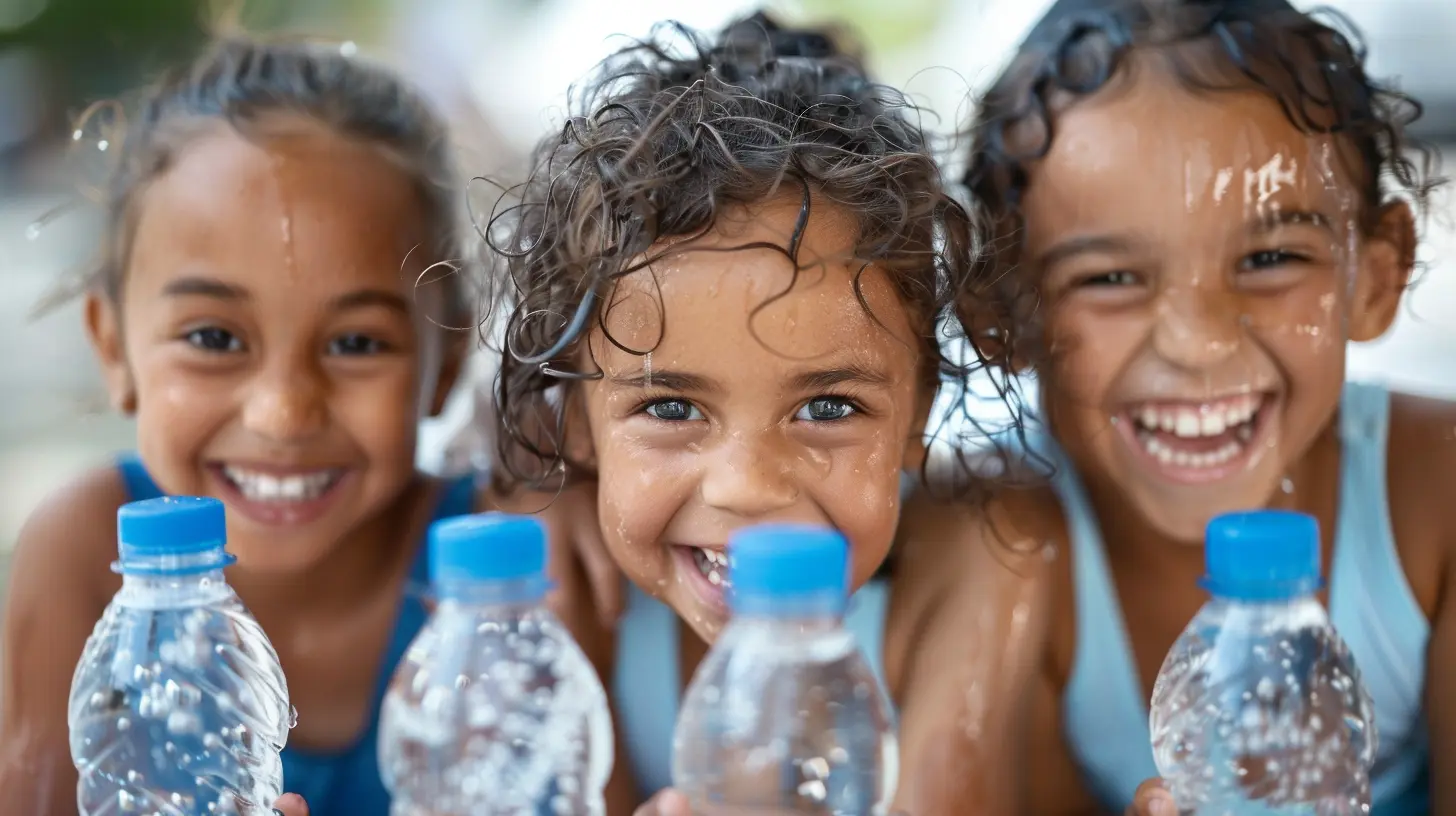
How Much Water Do Active Kids Really Need?
There's no one-size-fits-all answer, but here's a general rule of thumb:- Ages 4–8: About 5 cups (1.2 liters) a day
- Ages 9–13: Around 7–8 cups (1.6–1.9 liters) a day
- Teenagers: Up to 10 cups (2.3 liters), depending on activity level and climate
Now, if your kid is playing soccer in the blazing sun or doing back-to-back dance classes, they’ll need more. Add around 1–2 extra cups of water for every 30–60 minutes of intense activity.
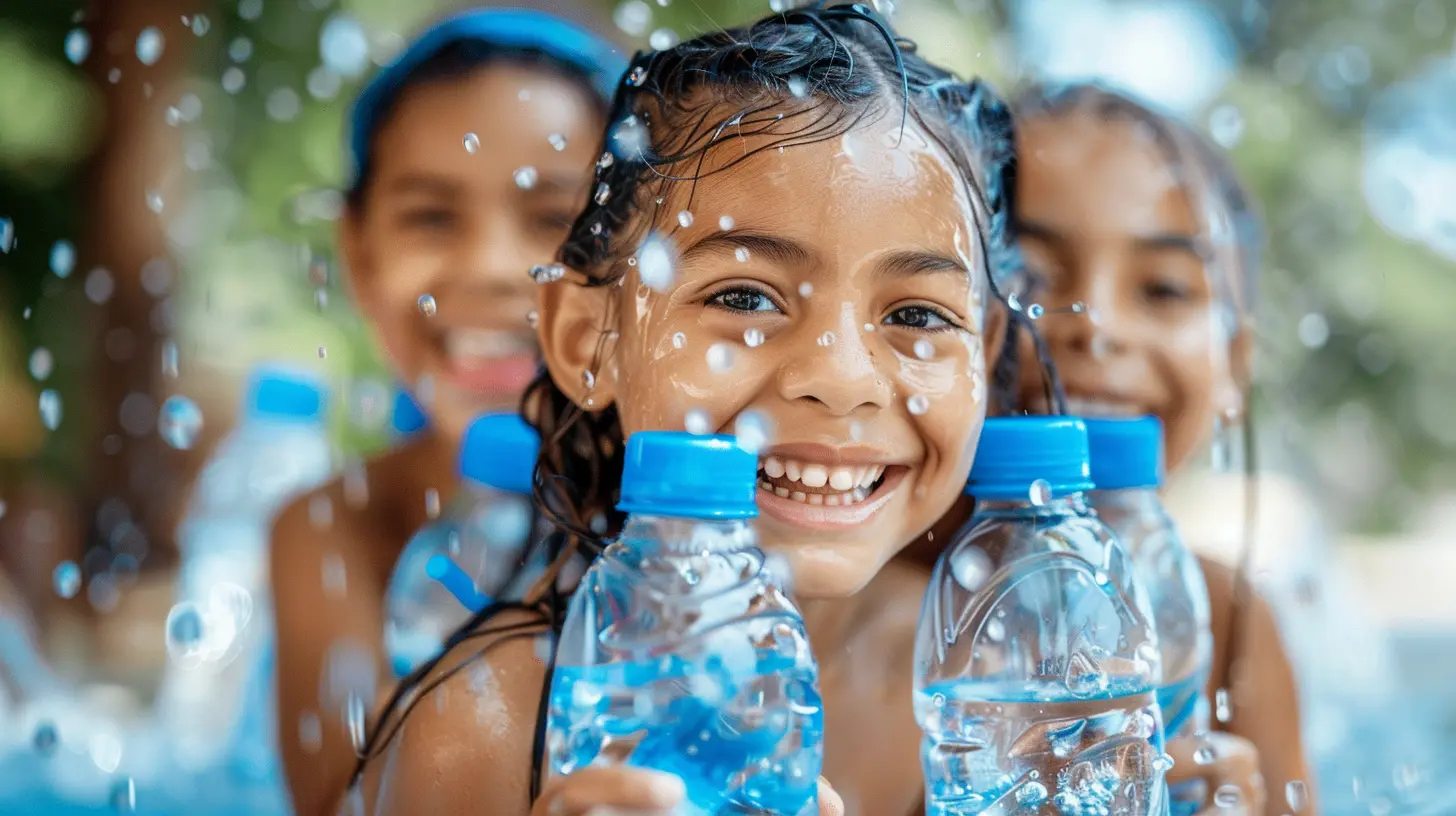
10 Smart Hydration Tips for Active Kids
Alright, let’s get into the good stuff. Here’s how to make sure your energetic little athlete drinks enough—even when they’re too busy living their best life to think about it.1. Make Water Easily Accessible
Simple? Yes. Effective? Absolutely.Kids won't drink what they can't find. Make water visible and easy to grab—at home, in the car, at sports practice. Reusable water bottles are lifesavers here. Keep one in their backpack, one by their bed, and one in the fridge for grab-and-go moments.
Bonus tip: Let your child pick out a fun water bottle they love. If it has a unicorn or a T-Rex on it, they’re way more likely to carry it.
2. Serve Water With Every Meal
This one’s a habit-builder. If you serve water with breakfast, lunch, and dinner, it becomes second nature. It's like brushing teeth—eventually, it's just part of the routine.You can even make it fun with colored cups, silly straws, or ice cubes shaped like stars. Water doesn’t have to be boring—it just needs a makeover.
3. Infuse Water With Natural Flavors
Let’s be honest—some kids just don’t like plain water. That’s cool, we can work with it.Try these easy infusions to add flavor without the sugar overload:
- Sliced strawberries and mint
- Lemon and cucumber
- Orange and basil
- Watermelon cubes and lime
Stick the combo in a pitcher or water bottle and let it sit for an hour. Boom—fancy spa water that even picky kids will sip.
4. Offer Hydrating Foods
Guess what? Eating your water counts too!Some fruits and veg are loaded with water and make awesome snacks for active kids. Fill their lunchbox with:
- Watermelon (duh—it’s in the name!)
- Cucumbers
- Oranges
- Grapes
- Strawberries
- Celery
- Peaches
Think of these as edible hydration backups—they’re perfect for days when getting them to drink is like pulling teeth.
5. Set Reminders (Yes, Even for Water!)
Technology to the rescue! Use alarms or hydration reminder apps to nudge your kid (and probably yourself too) to drink throughout the day—especially before and after physical activity.For younger kids, try a sticker chart. Every cup of water earns a sticker, and five stickers = a small reward. It's parenting bribery 101, and it works like a charm.
6. Teach Your Kids the "Pee Test"
Kid-friendly and effective. Tell them this:“If your pee looks like lemonade, you're good to go. If it looks like apple juice, grab some water!”
Kids LOVE this analogy (and somehow find it hilarious), but it helps them stay in tune with their hydration needs.
7. Lead by Example
Yep, kids watch everything we do—even the stuff we wish they didn’t.So if they see you drinking water regularly, they're more likely to follow suit. Make family hydration a group effort. Cheers with your water bottles like you're toasting with root beer floats.
8. Keep Them Hydrated Before, During, and After Exercise
Timing is everything. Don’t wait until after the game when they’re parched.Here’s a quick hydration plan around workouts or sports games:
- Before: 1–2 cups of water about 30 minutes before exercise
- During: Small sips every 15–20 minutes
- After: Another 1–2 cups within 30 minutes of finishing
Think of hydration like fueling a car—you wouldn’t hit the road on empty, right?
9. Watch Out for Overhydration
Wait, is that a thing? Yep.While dehydration is the big concern, too much water—especially in a short period—can mess with electrolyte balance. This is rare but more common in endurance sports.
Solution? If your child is engaged in long-duration sports (like marathon training—hello, future Olympian!), consider adding an electrolyte drink. Just watch the sugar content in commercial sports drinks. Or, make a homemade version with a pinch of salt, a splash of juice, and some water.
10. Stay Ahead During Hot or Cold Weather
Extreme temperatures throw a wrench in hydration.In hot weather, kids sweat more and need extra fluids. In cold weather, they might not feel thirsty even though their body still needs water. Don’t let weather fool you—hydrate consistently year-round.
Layer on hydration just like you would jackets or sunscreen.
What About Sports Drinks?
Here's the honest scoop: most kids don’t need 'em.Unless your child is exercising intensely for over an hour, plain old water does the job. Sports drinks are often loaded with sugar and artificial junk their growing bodies just don't need.
If flavor helps them drink, go for low-sugar, natural options or make your own with a mix of water, a splash of juice, and a pinch of salt.
Hydration Hacks You Haven’t Tried (But Totally Should)
Need a few more tricks up your sleeve? Here are some bonus tips to outsmart even the most water-resistant kiddos:- Frozen fun: Freeze mini bottles of water to toss in lunchboxes. They stay cold till lunch and double as an ice pack.
- Straw obsession: For some reason, drinking through a straw is 10x more fun. Keep silly straws on hand as a hydration tool.
- Flavor drops: Look for natural, low-sugar water enhancers as a backup.
- Water-drinking challenges: Who can finish their glass first? Sibling competition gets real here.
- Hydration stations: Set up a "hydration station" at home with water, fruit, and cups. Make it a part of your daily routine, like a snack bar!
Final Thoughts: Keep It Simple and Consistent
Hydration isn’t rocket science—it just takes a little planning and consistency. Active kids need water like fish need the ocean. It keeps them happy, sharp, and energized—so they can keep dominating the playground, scoring goals, or just running around like adorable maniacs.Start small. Build the habits. Celebrate the wins (and the empty water bottles). Before you know it, your kid will be chugging water like a pro.
And remember, you’re doing great. Parenting is hard enough—this is one area where a few tweaks can make a huge difference.
all images in this post were generated using AI tools
Category:
Healthy EatingAuthor:

Kelly Snow
Discussion
rate this article
1 comments
Landon McNair
Excellent tips on keeping kids hydrated! Remember that active children can lose fluids quickly. Encourage them to drink water before, during, and after physical activities, and consider incorporating hydrating snacks like fruits. Also, make hydration fun by letting them choose their colorful water bottles! Great article!
August 31, 2025 at 3:22 AM

Kelly Snow
Thank you! I'm glad you found the tips helpful. Encouraging hydration through fun choices and snacks is key to keeping kids healthy and active!

